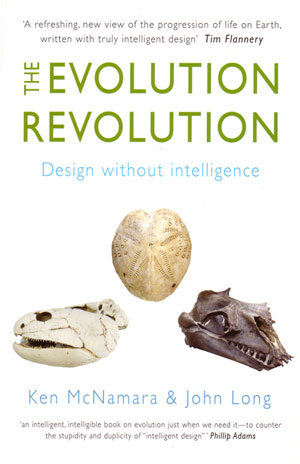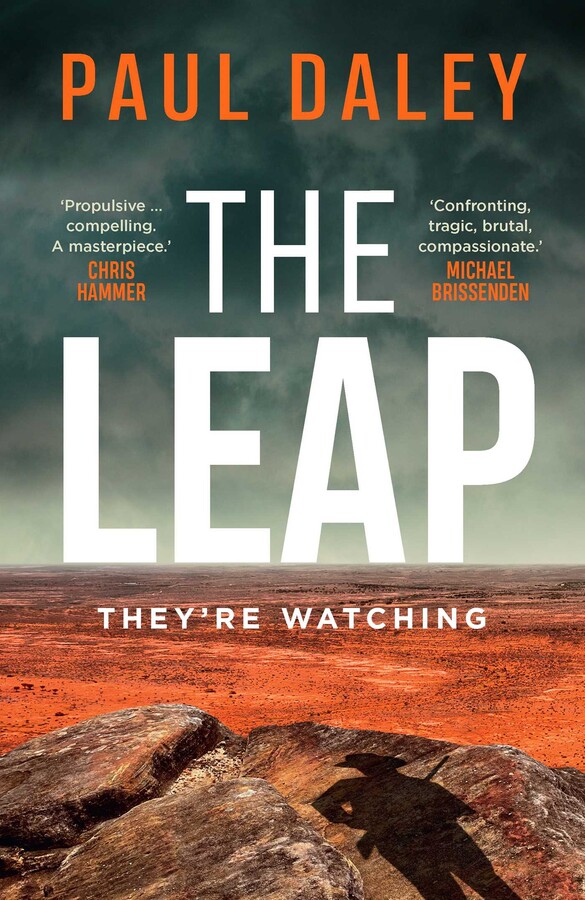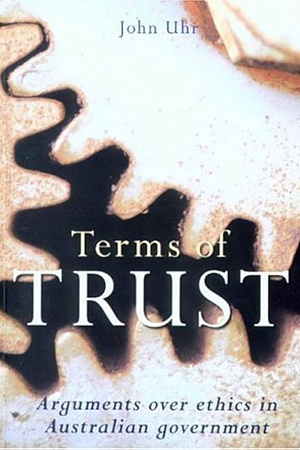The Evolution Revolution: Design Without Intelligence
MUP, $32.95 pb, 304 pp
The knowing people
Exactly one hundred years before this new edition of The Evolution Revolution, by Australian palaeontologists Ken McNamara and John Long, the Rationalist Press Association promoted the first English version of The Evolution of Man (1907), by the great German biologist Ernst Haeckel. In his preface, Haeckel’s translator, Joseph McCabe, pointed out that, since the first German printing in 1874, only fifteen years after the publication of Darwin’s The Origin of the Species by Means of Natural Selection (1859), ‘fresh facts have come to light in each decade, always enforcing the truth of man’s evolution’. Thus, ‘evolution is not a laboriously reached conclusion, but a guiding truth in biological literature today’ and, as such, ‘is accepted by influential clerics ... and by almost every biologist and anthropologist of distinction in Europe’.
Haeckel was primarily an embryologist. He was at the forefront of describing the complex processes of the ontological development of the body from a single fertilised egg cell. His enduring contribution to evolutionary biology was to recognise that adaptations of an adult organism to its environment must have arisen through modification of the developmental process. Moreover, he demonstrated that animals with widely divergent adult forms may display remarkably similar stages of early embryonic development, as befits their evolution from a shared common ancestor.
Over the last thirty years, the formidable tools of molecular biology have been used to probe the genetic foundations of biological diversity. The results have been truly remarkable: we now know that common sets of genetic algorithms regulate the development of most if not all animals, from worms and insects through to chickens, mice and humans. These same genes, and the developmental programmes that they regulate, comprise much of the basic substrate upon which evolution by natural selection operates.
For all its strengths, one limitation of molecular biology is that its raw material can be obtained only from organisms living today (but even this may be changing as more and more partial sequences are obtained from fossilised sources). So, in order to study the chronology of life on earth through all its evolving forms, one must turn to the fossil record. This record is now known to stretch back more than three billion years. Despite some frustrating gaps and discontinuities, it is a vast record. There are probably hundreds of millions of fossils housed in public collections within the world’s museums and universities. Significant new fossils continue to be uncovered and reported in the international scientific literature. The unlikely partnership between palaeontologists and molecular biologists forged over recent years has been incredibly successful in providing the coherence between development and evolution that Haeckel predicted, but for which he (like Darwin) had no underlying mechanistic explanation.
Despite this wealth of information, proponents of so-called ‘Creation Science’ and its successor, ‘Intelligent Design’, assert that evolutionary biology is an unproven idea, inconsistent with their literalist interpretation of the Bible. Consequently, they have argued that biblical views of the history of life on earth, specifically as it relates to the origin of humans, have equivalent scientific status with evolutionary ‘theory’ and should have equal time within school science curricula. In the United States, the antievolutionists have exerted significant political influence on the education system, especially in the more conservative states. Since 1925, when biology teacher John Thomas Scopes was put on trial for teaching evolution in a Tennessee high school, Christian fundamentalists have continued to use the courts and legislature to challenge the validity of teaching evolutionary biology (e.g. see New Scientist, 9 July 2005).
‘Intelligent Design’ posits that at least some biological mechanisms are too complex to have evolved as a result of natural selection. Such mechanisms could range from the molecular motors that underlie bacterial motility to the interactive neural circuits that mediate vision. The implication is that such systems are so complex that they could not operate at a transitional, presumably sub-optimal, level. Therefore, they could not have evolved, and some other overarching entity must have purposefully ‘designed’ their function. The problem with this position is that it is not supported by the evidence: there are abundant examples of transitional forms, either living or from the fossil record, at all scales of organisation from molecules to whole organisms. Moreover, there are many biological structures that are evolutionary remnants with no current function. Even in Haeckel’s time, this was well known, and he coined the term ‘dysteleology’ to cover such conditions.
Evolution forms the inescapable conceptual framework of all of modern biology, including its application to medicine. So it is not surprising that the argument against the anti-evolution lobby has been taken up so strongly by high-profile biologists, such as Richard Dawkins (The Blind Watchmaker [1986]; Climbing Mount Improbable [1996]) and the late Stephen Jay Gould (Wonderful Life [1989]; Life’s Grandeur [1996]). This ongoing history of public disputation provides the context for the second, revised, edition of The Evolution Revolution: Design without Intelligence.
In their preface, McNamara and Long echo the sentiments of Haeckel’s translator a century earlier when they unashamedly admit, ‘It amazes us that many people simply ignore the overwhelming amount of data shown by the fossil record of life on Earth’. Rather than engage in a direct argument with the claims of the supporters of Intelligent Design in the manner of Dawkins or Gould, McNamara and Long describe some of the most dramatic palaeontological ‘discoveries of the past decade as well as examples of the new technologies’ that allow their interpretation. Each of the chapters is largely self-contained and focuses on a specific group of organisms that characterise a particular geological period. Many of their examples come from Australia. As such, they reinforce the increasingly strong evidence that Australia and its predecessor, Gondwana, the great southern super-continent, have been crucibles of evolutionary innovation time and time again.
McNamara and Long are both world-renowned palaeontologists and successful popular science writers. Their book generally maintains a good balance between the professional need for accuracy and the necessity to engage a wider readership. Most chapters are introduced by personal accounts of the ‘excitement and fascination’ of fossil discovery. At one level, these vignettes illustrate the difficult conditions under which palaeontologists must work to find their fossils. But at another level, these pieces reveal insights into the scientific process underpinning new discoveries in evolutionary biology. Opponents of evolution often claim that evolutionary theory cannot generate testable hypotheses, and, therefore, it is not really science.
However, a strength of The Evolution Revolution is that the authors document many cases where gaps in the fossil record have been filled by targeting exploration to specific geological formations predicted by existing knowledge. In the manner of real-world science, not all predictions are verified, leading to refinement of working hypotheses and the generation of new predictions. The discussions of this process occasionally develop into short debates about the relative merits of different interpretations of new data, employing technical terms with little if any definition, more suited to a professional journal. A simple glossary, and a few additional illustrations showing the potential ‘family trees’ linking different groups of organisms, would have increased the accessibility of these discussion to non-specialists.
The Evolution Revolution is a valuable resource for readers enquiring after the current state of knowledge about the evolution of specific groups of organisms, especially when used in conjunction with its extensive (and up-to-date) bibliography. However, readers who tackle the book as a whole will be rewarded by a contemporary view of evolutionary biology that Haeckel would admire as a genuine heir to his own ideas. I expect that he would celebrate with us the discovery in the Flinders Ranges of ancient marine faunas that experimented with strange body forms, now extinct forever. Surely he would admire the beautifully preserved fossils from China that show the halting, but ultimately successful transition from dinosaurs to birds. And he would welcome the evidence for the long evolutionary trail, with all its sidetracks, dead ends and short cuts, leading from fish-like creatures swimming in Western Australian seas nearly half a billion years ago, to the changing ecosystems of eastern Africa a few million years ago, where the first protohumans walked upright on the path to our very own species, Homo sapiens: the knowing people.












Leave a comment
If you are an ABR subscriber, you will need to sign in to post a comment.
If you have forgotten your sign in details, or if you receive an error message when trying to submit your comment, please email your comment (and the name of the article to which it relates) to ABR Comments. We will review your comment and, subject to approval, we will post it under your name.
Please note that all comments must be approved by ABR and comply with our Terms & Conditions.